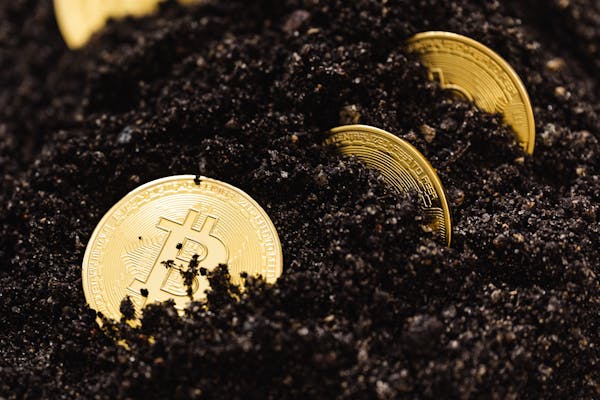Introduction
Cryptocurrency mining is a fascinating topic that often intrigues beginners. Understanding the process is key to delving deeper into the world of digital currencies like Bitcoin and Ethereum. This guide will break down the technical jargon into simple concepts and walk you through how cryptocurrency mining works.

What is Cryptocurrency Mining?
At its core, cryptocurrency mining is the process of validating transactions on a blockchain. Miners compete to solve complex mathematical problems, securing the network and earning rewards in the form of digital assets such as Bitcoin. This process relies on a decentralized network, ensuring that no single entity controls the currency.
Understanding the Blockchain
The blockchain is a digital ledger that records every transaction in the network. Unlike traditional ledgers, it is decentralized, meaning copies exist across thousands of computers (or nodes) globally. Miners play a crucial role by ensuring that each transaction is verified and added to the blockchain.
How Mining Works: A Step-by-Step Guide
- Transaction Broadcasting
When someone initiates a cryptocurrency transaction, it gets broadcast to the network. Miners collect these transactions to create a block. - Solving Mathematical Problems
Miners use powerful hardware to solve complex cryptographic puzzles. This process, known as hashing, ensures the transaction’s validity. - Proof of Work
The first miner to solve the puzzle presents their solution to the network. If verified, the block gets added to the blockchain. - Reward Distribution
For their efforts, miners receive a block reward, along with any associated transaction fees.
Key Tools for Cryptocurrency Mining
- Mining Hardware: Devices like GPUs (Graphics Processing Units) and ASICs (Application-Specific Integrated Circuits) are essential for efficient mining.
- Mining Software: Programs like CGMiner and NiceHash help miners connect to blockchain networks.
- Wallet: A secure location for storing earned crypto tokens.
- Mining Pools: Groups of miners combine their resources to increase their chances of earning rewards.
Popular Cryptocurrencies to Mine
- Bitcoin: The pioneer cryptocurrency, known for its high value.
- Ethereum: Often favored for its versatility and smart contract capabilities.
- Litecoin and Altcoins: Easier to mine and often more beginner-friendly.
Challenges in Cryptocurrency Mining
- Electricity Costs
Mining consumes significant energy, leading to high electricity bills. - Hardware Expenses
Investing in top-tier mining equipment can be costly. - Market Volatility
Cryptocurrency values fluctuate, affecting mining profitability. - Regulations
Governments may impose restrictions, complicating operations.
The Environmental Debate
Mining has drawn criticism for its carbon footprint. Efforts to use renewable energy sources are growing, with some companies adopting sustainable practices. This shift could shape the future of mining.
Future of Cryptocurrency Mining
As technology evolves, so does mining. Concepts like cloud mining and green mining are gaining traction. These innovations promise to make mining more accessible and environmentally friendly.
Conclusion
Cryptocurrency mining is a dynamic field that combines technology, finance, and innovation. By understanding the process and staying informed, beginners can unlock the potential of this exciting industry. Whether you’re considering mining for profit or simply exploring the world of digital currencies, this guide provides a solid foundation.
